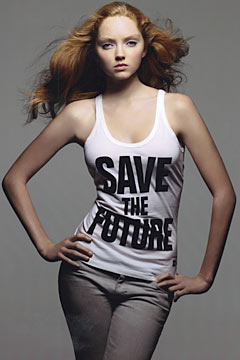What is eco fashion?
Sustainable fashion, also known as eco fashion, refers to the recent movement within the industry to create stylish clothing through environmentally friendly means. The trend, which according to Vogue, appears to be not a trend at all, but rather a development that could last multiple seasons, has inspired key players to make improvements in both the creation as well as the production of apparel.
Until recently, many clothing companies were focusing only on the final product, and the profits that it would produce. Like many other industries, cost reduction was a high priority. Production was often outsourced to sweat shops with unethical business practices, fabrics were often treated with high levels of pesticides and other chemicals, and the creation of green house gases during the processing were rarely given second thought.
Many designers are now choosing to go green, starting with production. After the late 90s activist movement against worker exploitation, a code of labor practices for clothing companies was created by the Fair Labor Association. Many sweat shops of the apparel industry were shut down, and people started supporting the need for fair trade. Eco fashion is dedicated to paying employees respectable wages and providing quality working conditions.
The fashion industry is also seeing changes within the material of clothing. The organic movement began in the 60s with the development of organically-produced food, and eventually made its way to cosmetics, and more recently, textiles. Organic cotton is one of the major developments within eco fashion. Although the production of all cotton creates a fairly large carbon footprint, choosing organic is the safer route for the environment, as it is free of chemical fertilizers and toxic pesticides.
Other options for sustainable materials include all-natural fibers such as silk, hemp, and even bamboo. Being resistant to bacteria and mold, these fibers are easier to grow, improve soil quality and are even biodegradable. Animal fibers such as wool, alpaca and cashmere are also finding their way to the eco fashion runway. Style gurus everywhere are turning to plant-based dyes as well as AirDye technology, which adds color to clothing without using water.
Sustainable fashion is no longer attached to the hippy tie-dyed stereotype of the past. Eco fashion has now been adopted by clothing distributers as affordable as Wal-Mart, as well as the high fashion couture of the runways. In fact, many argue that the development is over-priced, as consumers view green products as elite. As more and more sustainable apparel companies enter the market, the supply will begin to match the high demand, and prices will begin to level out.
For now, eco fashion is here to stay. After all, green is the new black.

